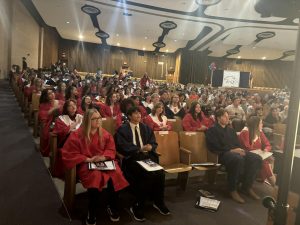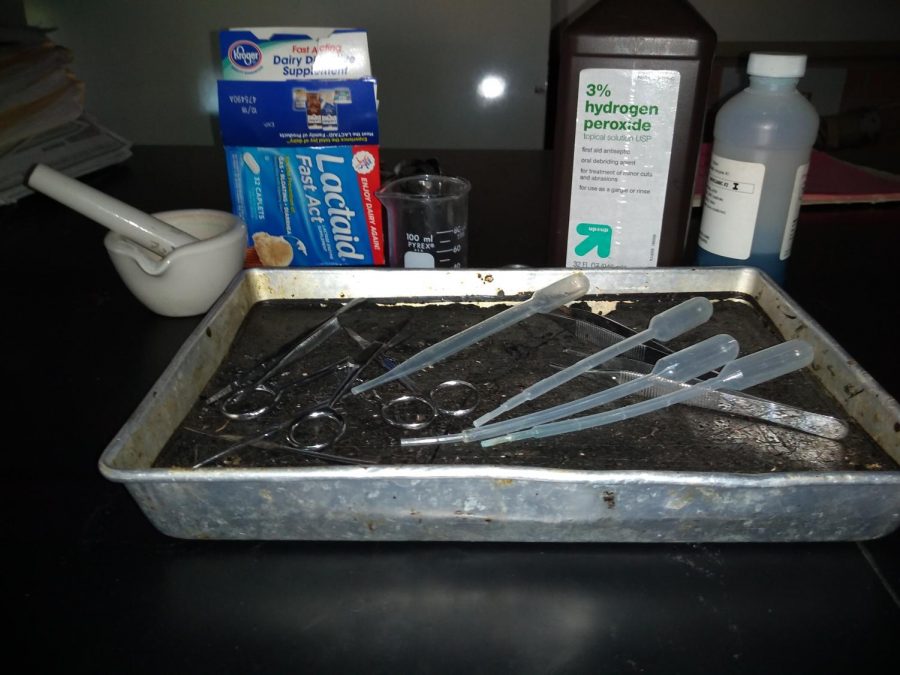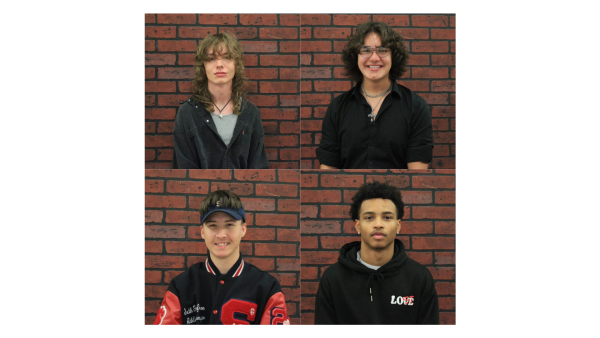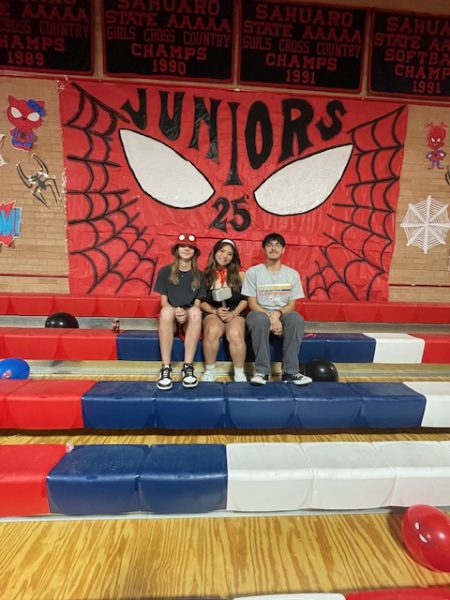Cow Tippers and Feline Enzyme Time
November 1, 2019
From walking around campus barefoot, performing his always entertaining stunts at the pep assemblies, to his exhilarating science classes, we all know Mr. Rutherford for one reason or another. This wacky science teacher is always keeping his students on their toes, especially his AP biology students, with new and inventive experiments.
This time Mr. Rutherford has his students doing two separate experiments on the same day. One called Feline Enzyme time where students place four different living tissues: beef, chicken, apples and potato, into hydrogen peroxide to see how they react. The goal of this experiment was to display how the enzymes in the different types of tissues work with the hydrogen peroxide and how it reacts (the reaction typically being the produc tion of hydrogen and oxygen bubbles causing the solution to bubble). The main question is how do temperature and the type of cells affect the standard reaction to the peroxide?
tion of hydrogen and oxygen bubbles causing the solution to bubble). The main question is how do temperature and the type of cells affect the standard reaction to the peroxide?
The second experiment called Cow Tippers was used to study Lactic, an ingredient in Lactaid, making it possible for people with an intolerance to lactose to consume dairy products. This is a revolution that most people need because in the words of Mr. Rutherford “well, we’re not babies and milk…… yeah milk is for babies.”
In this experiment the students used a chemical called Benedict Reagent to conclude if the sugar in the dairy product was prevalent. With the presence of sugar, the chemical will turn blue and with its absence, the chemical will turn red. The goal of this experiment was to see if the temperature of the milk would affect the sugar in it and how long the Lactaid would work in the milk.
With many more experiments to come, we are all excited to see what Mr. Rutherford has in store for everyone for the rest of the year.





















